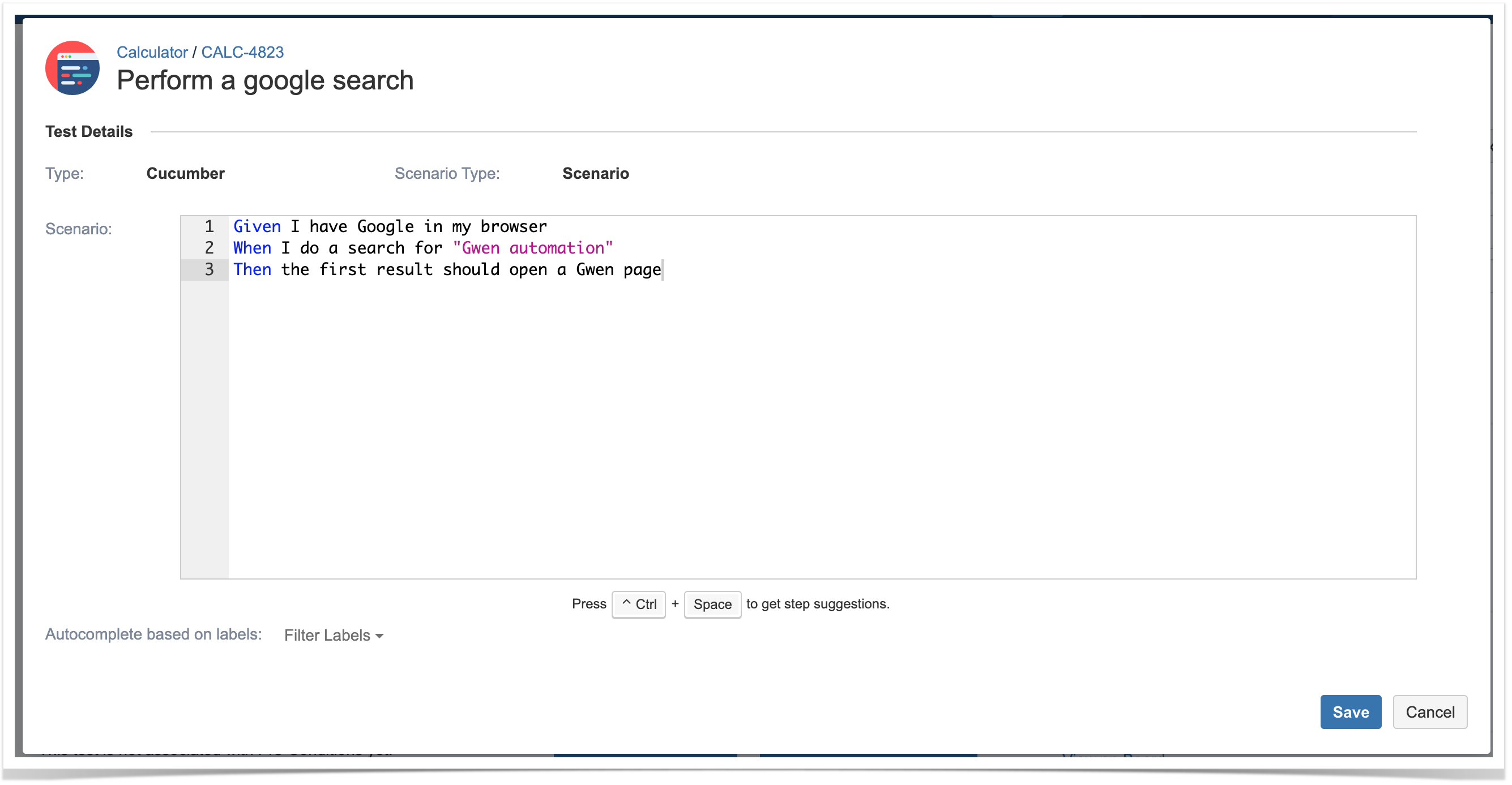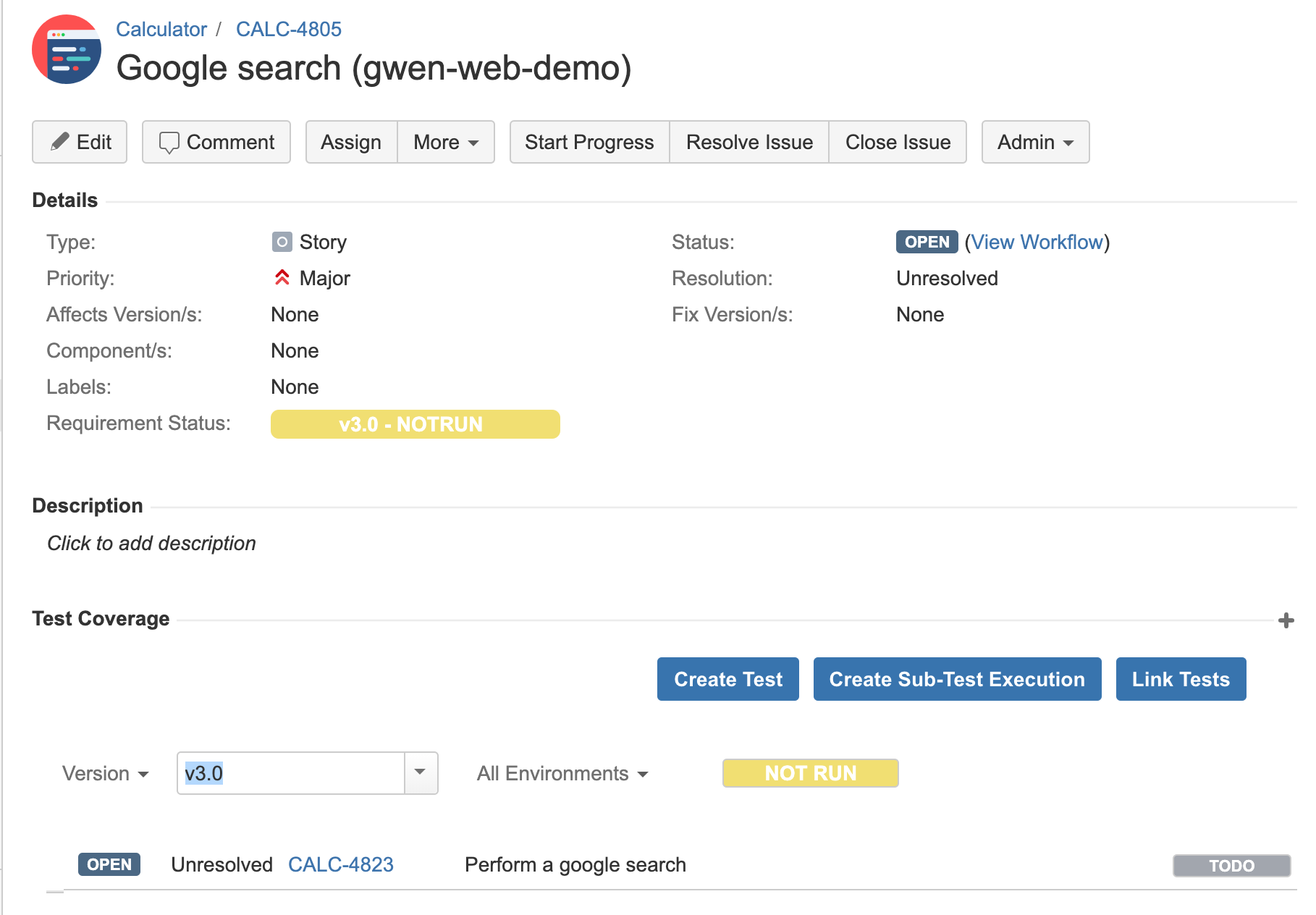Overview
In this tutorial, we will perform some web/UI-based tests using Gwen interpreter along with gwen-web engine.
Gwen uses the Given, When, Then syntax from Gherkin (thus, its name) to implement an interpretation engine that allows users to easily write "automated tests" (i.e. automated scripts), whose steps will be executed implicitly by their corresponding code implementation. Thus, users can focus on writing (executable) specifications without having to do all the implementation hard-work.
Gwen also separates declarative from imperative style Gherkin specifications. Declarative is done in standard .feature files that may include steps defined in while imperative specifications (i.e. "meta-features") are managed in .meta files.
Gwen Web Automation (gwen-web) is an engine that extends Gwen and adds capabilities for easy web testing using Selenium under the hood, by providing a DSL that allows users to interact with the browser without having to write code.
From the many interesting features of Gwen is the ability of automatically taking screenshots, which will be available for analysis after tests are run.
Requirements
- gwen
- gwen-web
- cucumber-json-merge
npm install -g cucumber-json-merge
Description
We will use sample code from gwen-web repository, using some instructions available online.
Remember that we need to manage:
- features (declarative specifications, usually stored in .feature files)
- meta-features (imperative specifications, usually stored in .meta files)
Besides that, you need to decide is which workflow we'll use: do we want to use Xray/Jira as the master for writing the declarative specification or do we want to manage those in Git?
Using Jira and Xray as master
This section assumes using Xray as master, i.e. the place that you'll be using to edit the specifications (e.g. the scenarios that are part of .feature files).
Please note
This tutorial explores using Xray for storing and managing the Scenea
The first step is to create a Cucumber Test, of Cucumber Type "Scenario", in Jira. The specification would be exactly the same as the one provided in the original repository.
After creating the Test in Jira and associating it with requirements, etc., you can export the specification of the test to a Cucumber .feature file via the REST API, or the Export to Cucumber UI action from within the Test/Test Execution issue or even based on an existing saved filter. A plugin for your CI tool of choice can be used to ease this task.
The coverage and the test results can be tracked in the "requirement" side (e.g. user story).
After being exported, the created file will be similar to the original but will contain the references to the Test issue key and the covered requirement issue key.
@REQ_CALC-4805 Feature: Google search (gwen-web-demo) @TEST_CALC-4823 Scenario: Perform a google search Given I have Google in my browser When I do a search for "Gwen automation" Then the first result should open a Gwen page
You can change the implementation of the steps in order to make them pass quickly.
Feature: Google search meta
@StepDef
Scenario: I have Google in my browser
Given I start a new browser
When I navigate to "http://www.google.com"
Then the page title should be "Google"
@StepDef
Scenario: I do a search for "<query>"
Given the search field can be located by name "q"
When I enter "$<query>" in the search field
Then the page title should contain "$<query>"
@StepDef
Scenario: the first result should open a Gwen page
Given the first match can be located by css selector ".r > a"
When I click the first match
Then the current URL should contain "gwen-interpreter"
There are additional tests for interacting with a demo page, with corresponding meta specification.
After running the tests and generating the Cucumber JSON report (e.g., data.json), it can be imported to Xray via the REST API or the Import Execution Results action within the Test Execution.
./gwen -b -m meta -f json -r target/reports features cucumber-json-merge -d target/reports/json/ curl -H "Content-Type: application/json" -X POST -u admin:admin --data @"merged-test-results.json" http://jiraserver.example.com/rest/raven/1.0/import/execution/cucumber
The execution screen details will provide information on the test run result that includes step-level information including duration.
As shown above, besides a detailed error message, screenshots are also automatically available on failed steps.
Learn more
Please see Testing in BDD with Gherkin based frameworks (e.g. Cucumber) for an overview of the possible workflows.
Using Git or other VCS as master
You can edit your .feature and .meta files outside of Jira (eventually storing them in your VCS using Git, for example).
In any case, you'll need to synchronize your .feature files to Jira so that you can have visibility of them and report results against them.
...
Given I have Google in my browser When I do a search for "Gwen automation" Then the first result should open a Gwen page
References
- https://github.com/gwen-interpreter/gwen
- https://github.com/gwen-interpreter/gwen-web
- https://gweninterpreter.wordpress.com/
- Testing in BDD with Gherkin based frameworks (e.g. Cucumber)
- https://github.com/bitcoder/cucumber-json-merge
- Automated Tests (Import/Export)
- Exporting Cucumber Tests - REST





